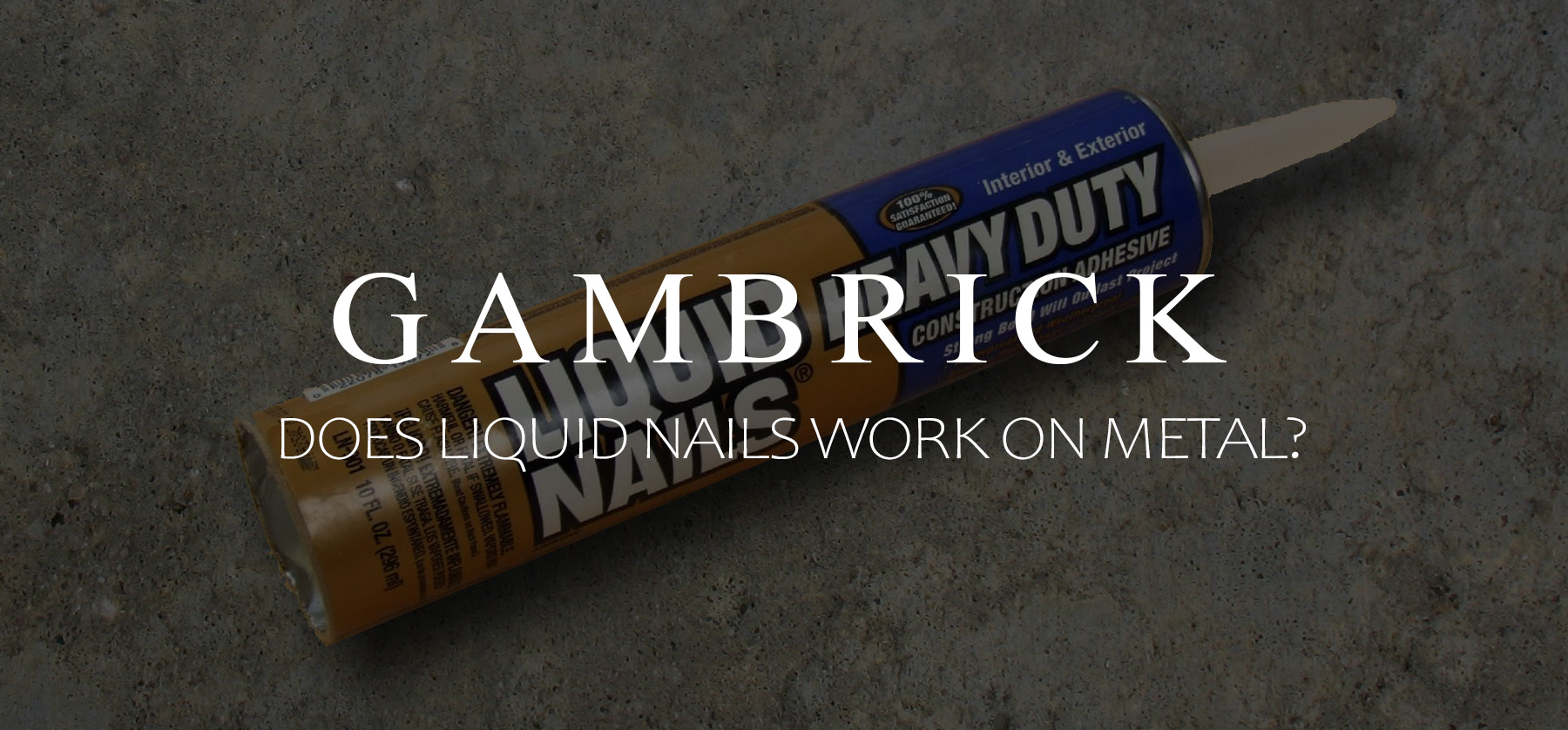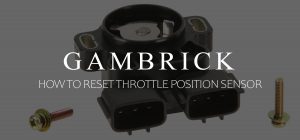Does Liquid Nails Work On Metal?
Liquid nails is a popular construction adhesive that’s known for its strength and durability. It can be used for a variety of applications, including bonding metal surfaces. However, there are some things you need to know before using liquid nails on metal. Liquid Nails will work on metal, but you need to use the right kind. There are different types of Liquid Nails designed for a variety of projects and materials. I recommend using their Heavy Duty Fuze It Max or Extreme adhesives. They’re thicker and bond much better to a variety of surfaces. You can use them to bond metal to metal, wood to metal, metal to concrete or metal to a variety of other surfaces like plastic and fabric.
Liquid Nails adhesive comes in a standard 9 oz. tube that you apply using a caulk gun. Simply squirt some adhesive onto the metal and then stick it to another surface. Hole the surfaces together using tape or a clamp until the adhesive hardens.
To make Liquid Nails hold stronger, scuff the surface of both the metal and the material you’re bonding too. It’s easier for adhesives to bond with a rough surface.
In this blog post, we will discuss the pros and cons of using liquid nails on metal, as well as some tips for getting the best results.
What Is Liquid Nails And What Are It’s Uses
Liquid nails is a construction adhesive that’s made from a latex compound. It’s known for its strength and durability and can be used for a variety of applications. Liquid nails can be used on wood, metal, concrete, and even ceramic tiles. It is generally much more versatile than a polyurethane adhesive.
Solvent-Based & Water-Based Liquid Nails
Solvent-based liquid nails have a stronger bond than water-based liquid nails, but they are also more toxic and flammable.
Water-based liquid nails are less toxic and flammable, but they have a weaker bond. When choosing a type of liquid nails to use on metal, it’s important to consider the intended application and the level of bonding strength required.
Pros And Cons Of Using Liquid Nails On Metal
One of the biggest advantages of using liquid nails is that it provides a very strong bond. This makes it ideal for applications where you need a strong hold, such as attaching two pieces of metal together. It can also be used on other materials, such as wood or plastic.
Another benefit of liquid nails is that it’s easy to use. You don’t need any special tools or equipment to apply it other than a caulk gun. This makes it ideal for quick and easy repairs.
However, there are some disadvantages to using liquid nails. One of the main problems is that it can be difficult to remove once its been applied. This means that you need to be careful when applying it, as you don’t want to accidentally glue something together that you can’t then un-do!
Overall, liquid nails has both advantages and disadvantages. It’s easy to use and provides a strong bond, but it can also be difficult to remove. You need to weigh the pros and cons before deciding whether or not it’s right for your particular project.
Are Epoxy Glues Better Than Liquid Nails On Metal?
It’s a question that we get asked a lot, and it’s one that we’ve been curious about ourselves. We decided to put both types of adhesives to the test to see which one performed better. We tested the bond strength, flexibility, and water resistance of each adhesive on both metal and wood surfaces.
Overall, we found that epoxy glue performed just a little better than liquid nails on both metal and wood surfaces. Epoxy glues form a stronger bond, are more flexible and are more water-resistant. Liquid nails did not fare as well in our tests, with a weaker bond and less flexibility. But it was really close.
If you’re looking for an adhesive to use on metal surfaces, we would recommend epoxy glue over liquid nails. However, liquid nails can’t be beaten when it comes to convenience and ease of use.
Tips For Getting The Best Results When Using Liquid Nails On Metal
If you’re looking for a strong adhesive for your next metal project, Liquid Nails is a great option.
Here are some tips to help you get the best results when using Liquid Nails on metal:
- Make sure both surfaces are clean and free of any dirt or debris. This will help the adhesive bond properly.
- For a stronger hold, rough up the surface of the metal before applying the adhesive. This will create more surface area for the adhesive to grip onto.
- Apply a generous amount of adhesive to one of the surfaces. You want there to be enough so that it’s visible, but don’t go overboard.
- Press the two surfaces firmly together and hold for a few seconds.
- If you need to reposition the surfaces, do so quickly as the adhesive will start to set fast.
- Allow the adhesive to cure for at least 24 hours before putting any weight on it.
You can find Liquid Nails adhesives at most hardware stores. Be sure to read the labels carefully to find one that is compatible with metal. Follow these tips and you’ll be sure to get a great bond on your next project!
Can Liquid Nails Bond Wood To Metal?
Yes, unlike wood glue, liquid nails can bond wood to metal. However, it’s important to note that not all liquid nails are created equal. Some are specifically designed for bonding wood to metal, while others are better suited for other materials.
When choosing what type of Liquid Nails to use for your project, be sure to read the label carefully to ensure that it will work. Look for metal and wood contact or wood to metal adhesive on the label.
Another thing to keep in mind is that even the best adhesives won’t work if the surfaces aren’t properly prepared. Be sure to clean both the wood and metal surface before applying the adhesive. Once the surfaces are clean, you can apply the liquid nails and allow them to dry according to the manufacturer’s instructions. With proper preparation and care, your bond should be strong and lasting.
Can Liquid Nails Bond Metal And Concrete Surfaces?
You bet it can! In fact, Liquid Nails is specifically designed to bond difficult-to-bond surfaces like metal and concrete. So if you’re looking for a product that can handle your toughest bonding jobs, Liquid Nails is the way to go.
If you want to learn more about how well Liquid Nails works on concrete click here, I’ve written an entire article about it.
Here are a few tips on how to get the best results when using Liquid Nails on metal and concrete:
- Make sure both surfaces are clean before applying adhesive. Use a wire brush or sandpaper to remove any rust from metal surfaces. For concrete, use a masonry cleaner or etcher.
- Apply adhesive to one surface only. Use a putty knife or similar tool to apply an even layer of adhesive about ¼ inch thick.
- Press surfaces together and hold for 30 seconds to a minute. Use C-clamps or similar devices to keep surfaces in place while the adhesive sets.
- Allow adhesive to cure for 24 hours before subjecting the bonded area to stress.
Final Thoughts
Liquid nails is a great option for bonding metal to metal, or metal to other materials. It provides a strong bond and is easy to use. However, it’s important to choose the right type of adhesive for your project and to follow the manufacturer’s instructions carefully. With a little care and attention, you can achieve great results!
We hope this article was helpful in answering your questions about using liquid nails on metal. If you have any further questions, please feel free to contact us. Thank you for reading!
Frequently Asked Questions
Here’s a list of the most frequently asked questions we receive about using Liquid Nails on metal surfaces.
Q: Can I use liquid nails on stainless steel?
A: Yes, you can use liquid nails on stainless steel. However, it’s important to choose an adhesive that’s specifically designed for bonding to metal. Be sure to read the label carefully to ensure that the adhesive will work for your project. Because not all types of Liquid Nails works on metal.
Q: How long does it take for liquid nails to dry?
A: The drying time will vary depending on the type of adhesive you choose. However, most types of Liquid Nails will take 24-48 hours to fully cure. Be sure to read the manufacturer’s instructions carefully to determine the drying time for your particular product.
Q: Can I use liquid nails on aluminum?
A: Yes, you can use liquid nails on aluminum. However, it is important to choose an adhesive that is specifically designed for bonding to metal. Be sure to read the label carefully to ensure that the adhesive will work for your project. Not all types of Liquid Nails bonds well with aluminum or other metals.
Q: Will liquid nails bond glass to metal?
A: Yes, liquid nails can bond glass to metal. However, it’s important to choose an adhesive that is specifically designed for bonding these two materials. Be sure to read the label carefully to ensure that the adhesive will work for your project. Not all types of Liquid Nails bonds well with metals or glass.
Q: Can I use liquid nails on an exterior and interior space?
A: Yes, you can use liquid nails on both exterior and interior surfaces. However, it’s important to choose an adhesive that is specifically designed for the type of surface you will be bonding. Be sure to read the label carefully to ensure that the adhesive will work for your project. Not all types of Liquid Nails can be used outdoors, however every type can be used indoors.
Summary: Does Liquid Nails Work On Metal?
Liquid nails is a popular construction adhesive that’s known for its strength and durability. It can be used for a variety of applications, including bonding metal surfaces. However, there are some things you need to know before using liquid nails on metal. Liquid Nails will work on metal, but you need to use the right kind. There are different types of Liquid Nails designed for a variety of projects and materials. I recommend using their Heavy Duty Fuze It Max or Extreme adhesives. They’re thicker and bond much better to a variety of surfaces. You can use them to bond metal to metal, wood to metal, metal to concrete or metal to a variety of other surfaces like plastic and fabric.
Liquid Nails adhesive comes in a standard 9 oz. tube that you apply using a caulk gun. Simply squirt some adhesive onto the metal and then stick it to another surface. Hole the surfaces together using tape or a clamp until the adhesive hardens.
To make Liquid Nails hold stronger, scuff the surface of both the metal and the material you’re bonding too. It’s easier for adhesives to bond with a rough surface.
If you have any questions about Liquid Nails, email any time.





















